Abstract
To assess the efficacy and safety of bisoprolol/6.25-mg hydrochlorothiazide (HCTZ), amlodipine, and enalapril in black and nonblack patients, data from two comparative studies were pooled and subgroup analyses performed. Both studies had similar designs and included all three active treatments. The second study also included a placebo group. Subjects (n = 541) with a sitting diastolic blood pressure of 95-114 mmHg were titrated to achieve a diastolic blood pressure < or = 90 mmHg. The studies included 114 blacks and 427 nonblacks. Results of an intention-to-treat analysis of mean change from baseline after 12 weeks of treatment showed the following: 1) blood pressure was significantly lowered by all three active drugs compared with baseline or placebo; 2) in blacks, bisoprolol/6.25-mg HCTZ resulted in significantly greater reductions of systolic and diastolic blood pressure than enalapril or placebo, but was not significantly different from amlodipine; 3) in nonblacks, bisoprolol/6.25-mg HCTZ resulted in significantly greater reduction of diastolic blood pressure than amlodipine, enalapril, or placebo. The placebo-corrected change in blood pressure was greater for blacks than whites on the bisoprolol/6.25-mg HCTZ combination, but this was not statistically significant. Bisoprolol/6.25-mg HCTZ controlled diastolic blood pressure to < or = 90 mmHg in significantly more patients than enalapril or placebo in blacks and nonblacks. The difference in control rates was not significant versus amlodipine. The incidence of drug-related adverse events was similar between treatments; however, bisoprolol/6.25-mg HCTZ had a lower discontinuation rate due to lack of blood pressure control or adverse experiences in both blacks and nonblacks.
Full text
PDF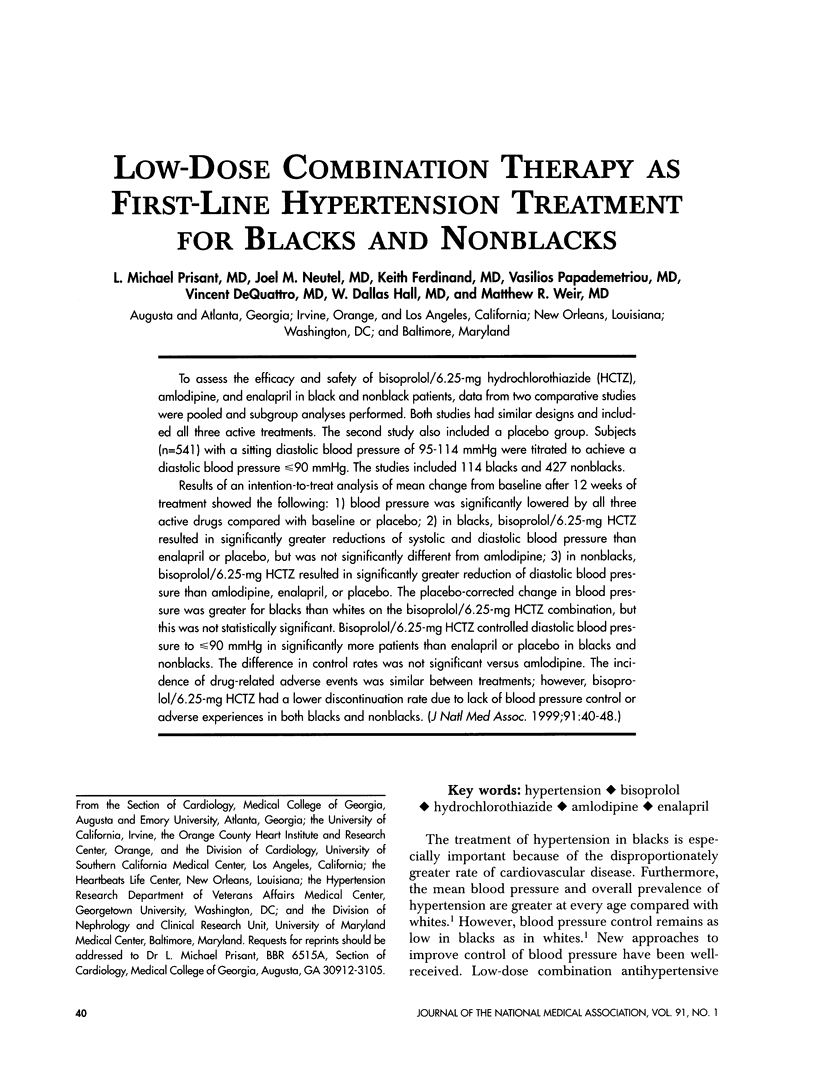
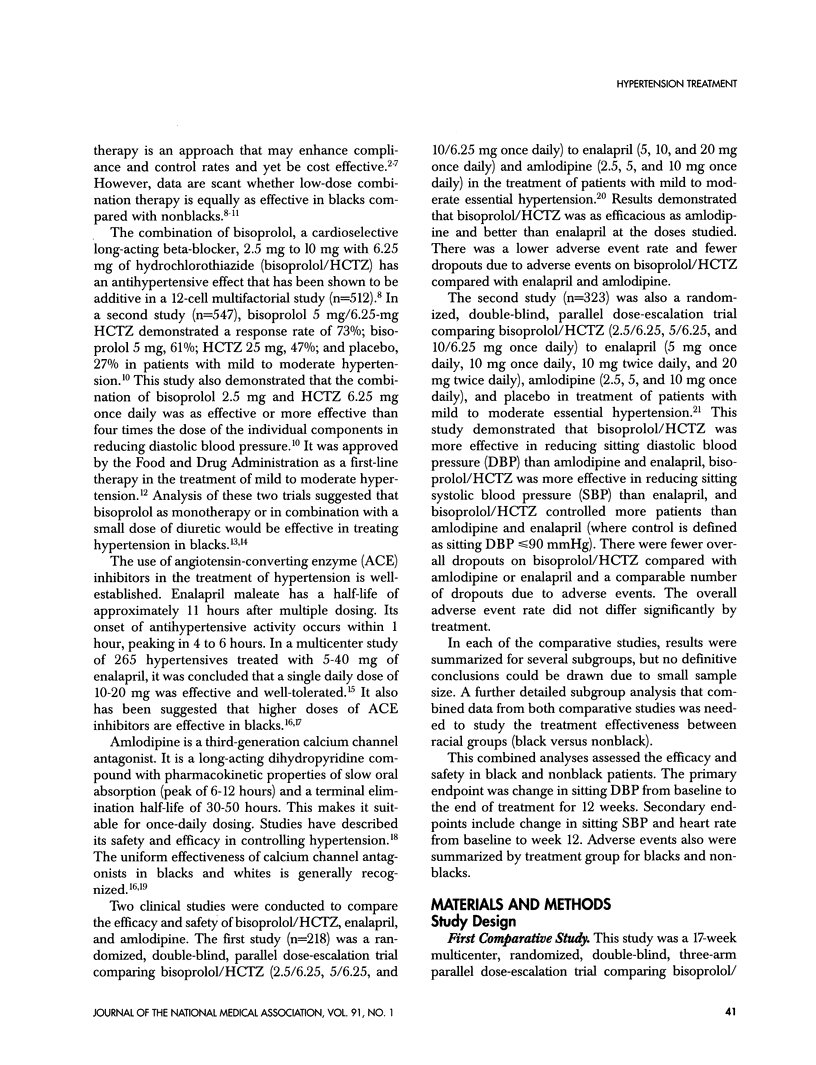
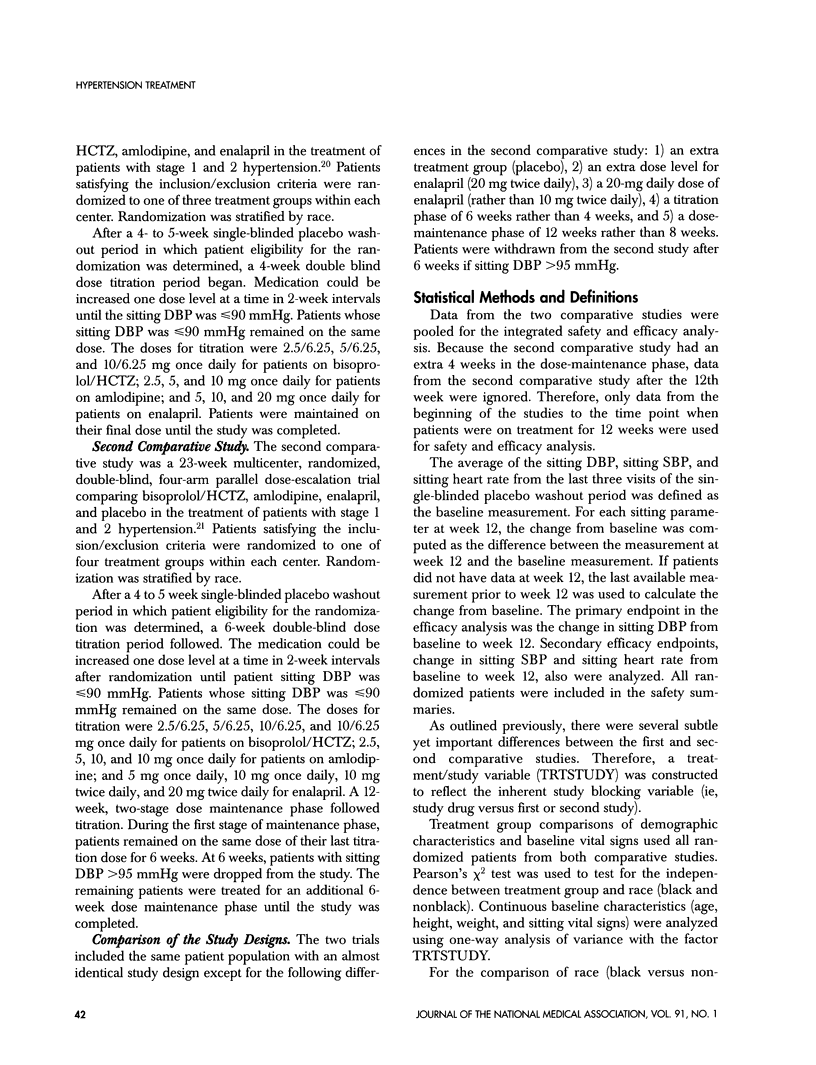
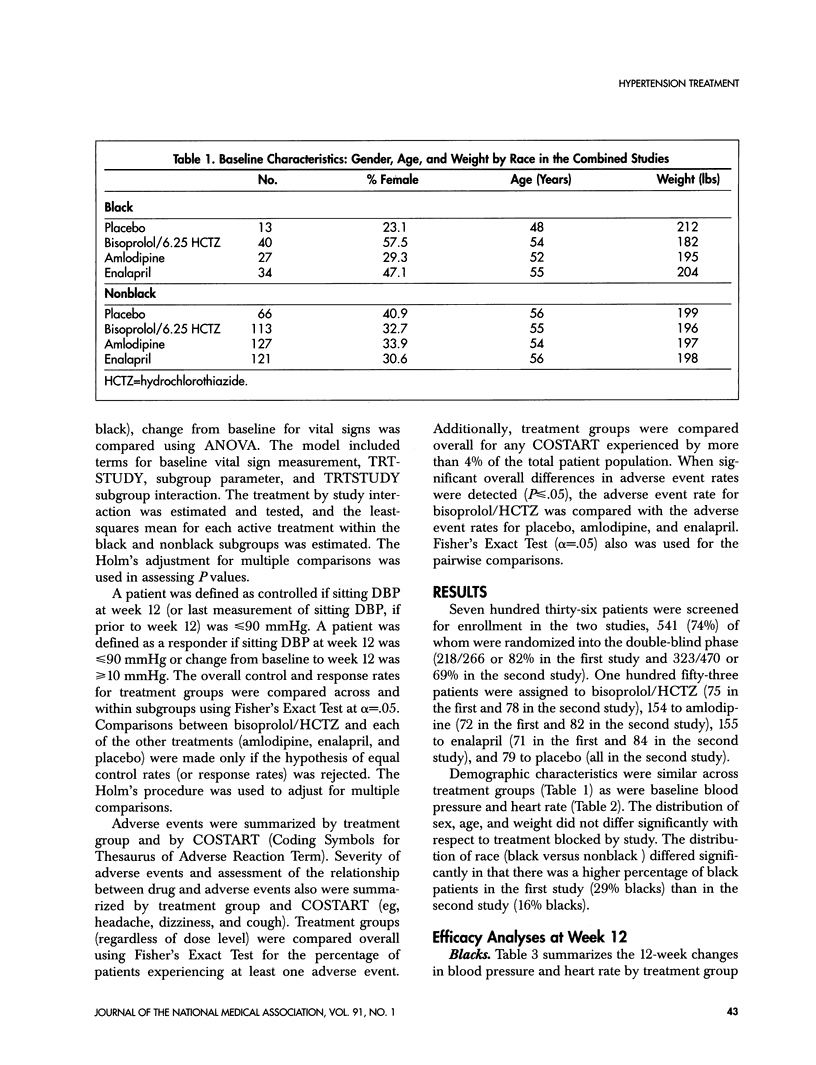
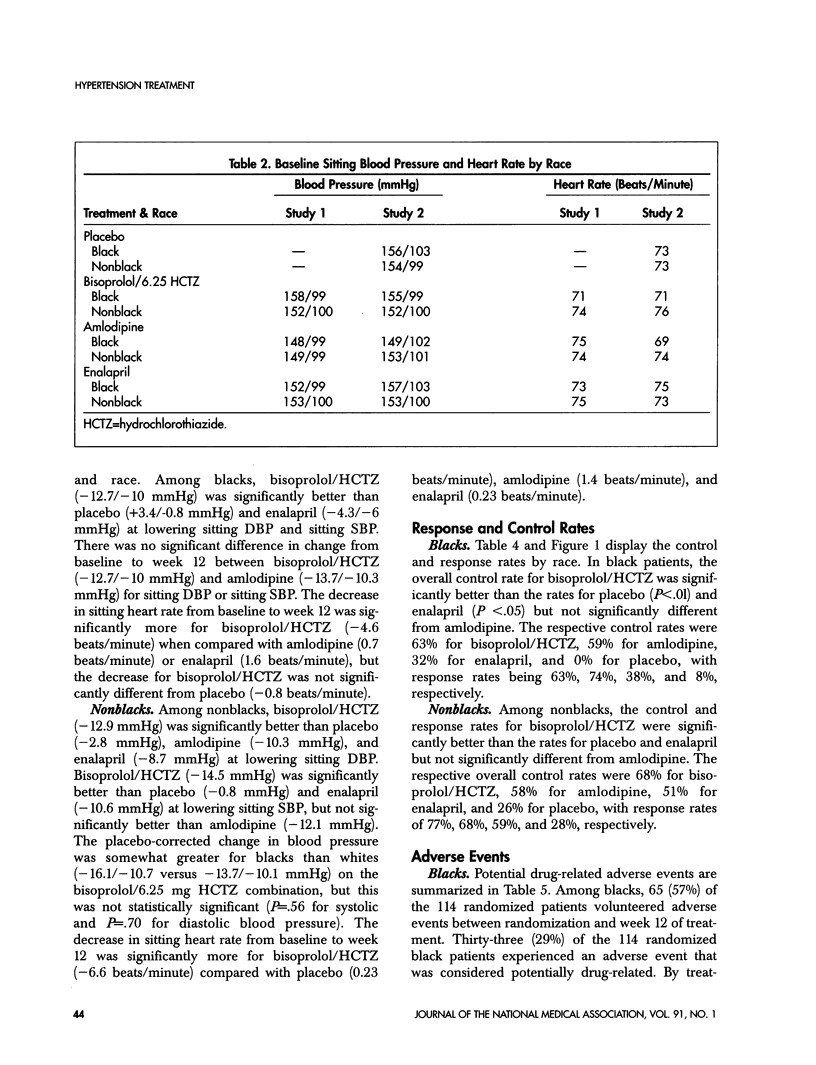
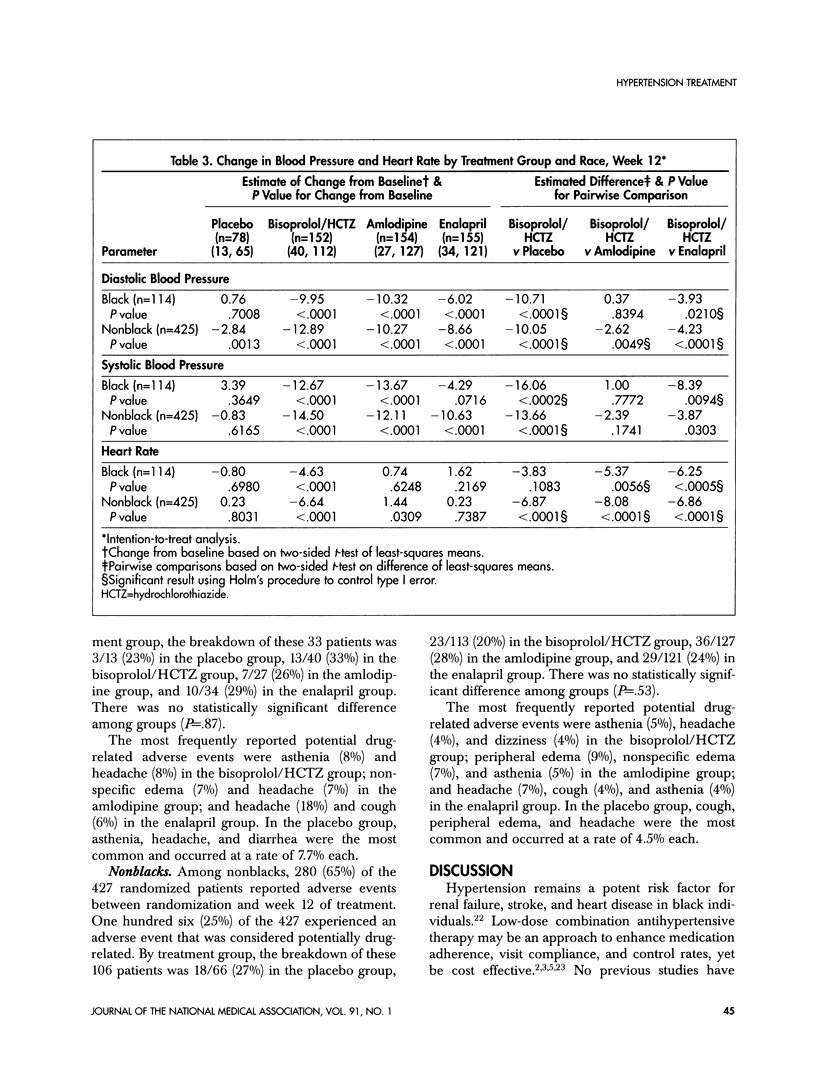
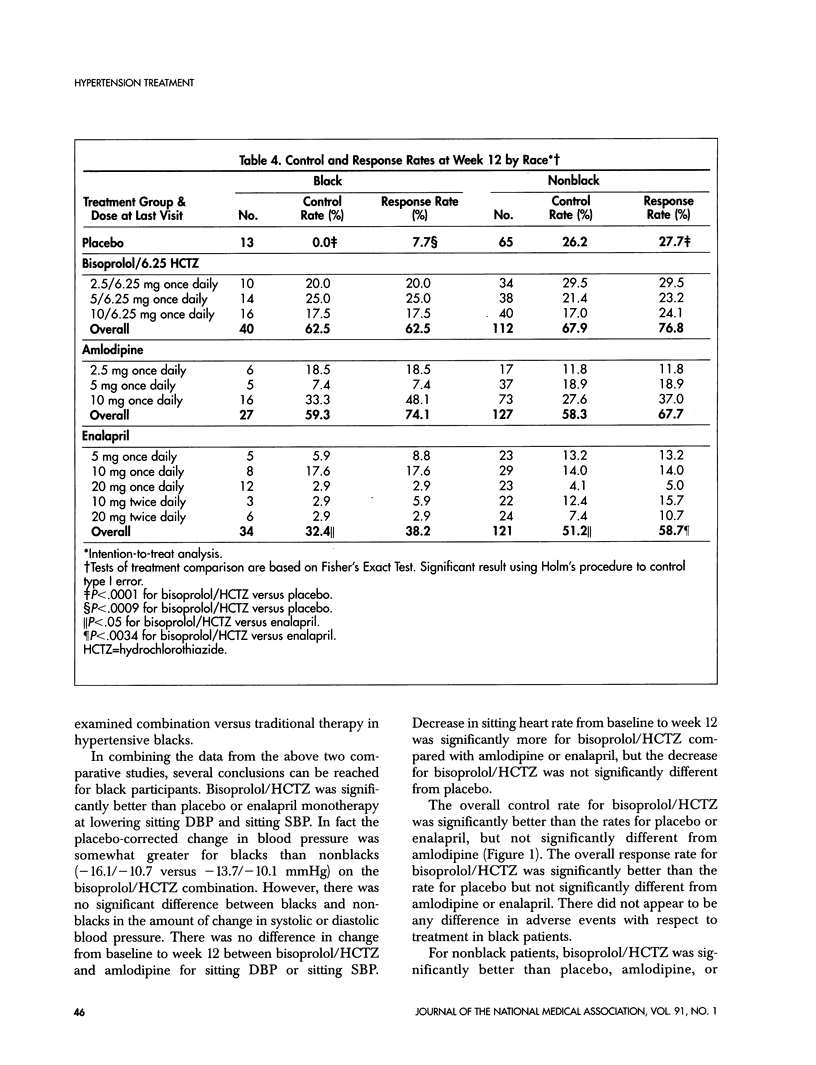
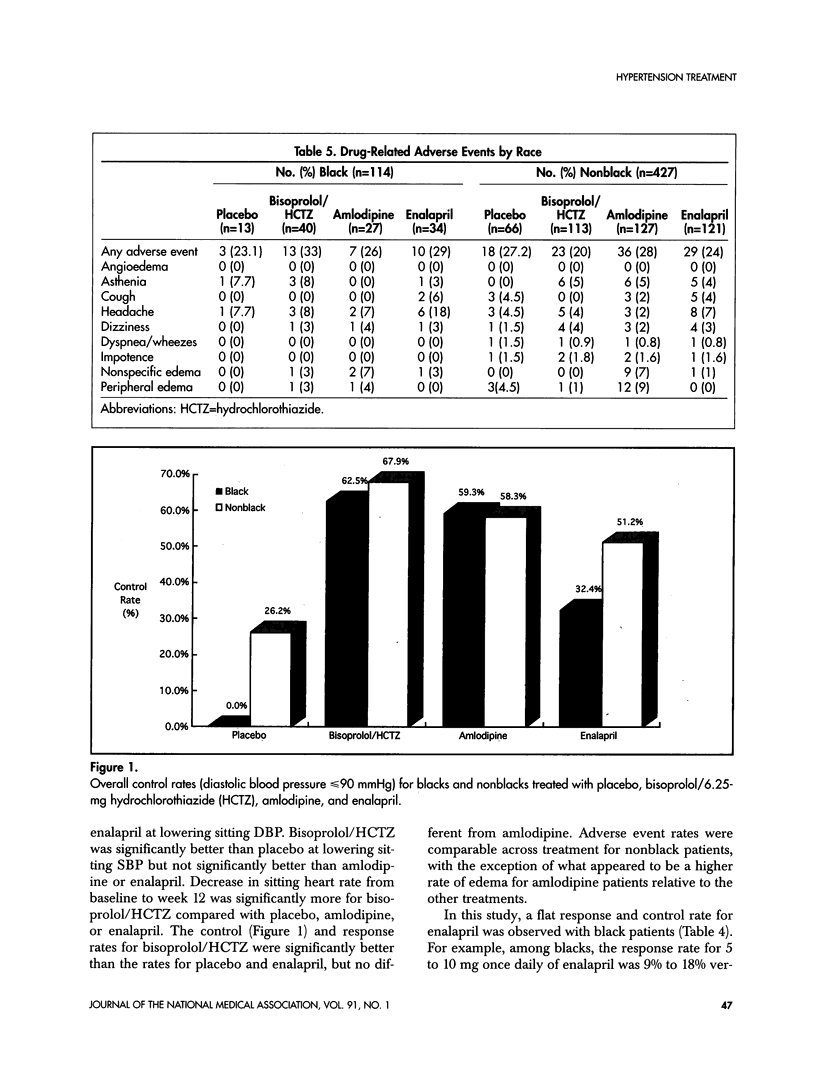
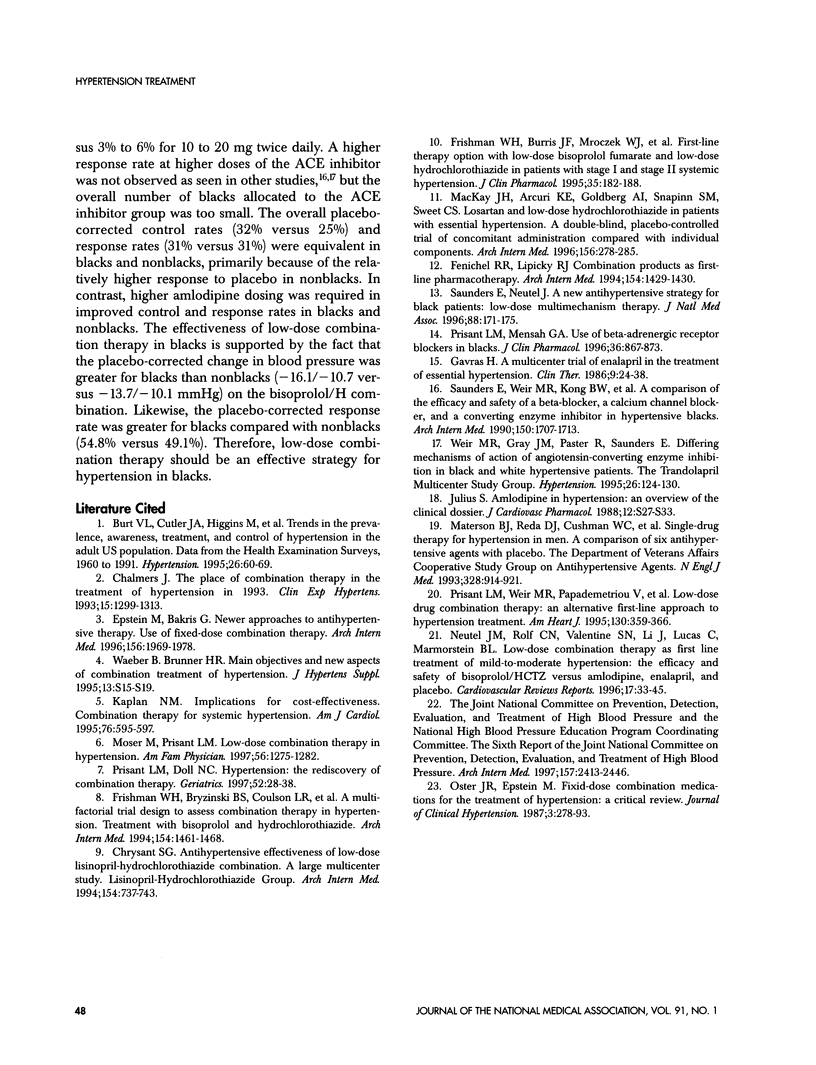
Selected References
These references are in PubMed. This may not be the complete list of references from this article.
- Burt V. L., Cutler J. A., Higgins M., Horan M. J., Labarthe D., Whelton P., Brown C., Roccella E. J. Trends in the prevalence, awareness, treatment, and control of hypertension in the adult US population. Data from the health examination surveys, 1960 to 1991. Hypertension. 1995 Jul;26(1):60–69. doi: 10.1161/01.hyp.26.1.60. [DOI] [PubMed] [Google Scholar]
- Chalmers J. The place of combination therapy in the treatment of hypertension in 1993. Clin Exp Hypertens. 1993 Nov;15(6):1299–1313. doi: 10.3109/10641969309037113. [DOI] [PubMed] [Google Scholar]
- Chrysant S. G. Antihypertensive effectiveness of low-dose lisinopril-hydrochlorothiazide combination. A large multicenter study. Lisinopril-Hydrochlorothiazide Group. Arch Intern Med. 1994 Apr 11;154(7):737–743. [PubMed] [Google Scholar]
- Epstein M., Bakris G. Newer approaches to antihypertensive therapy. Use of fixed-dose combination therapy. Arch Intern Med. 1996 Sep 23;156(17):1969–1978. [PubMed] [Google Scholar]
- Fenichel R. R., Lipicky R. J. Combination products as first-line pharmacotherapy. Arch Intern Med. 1994 Jul 11;154(13):1429–1430. [PubMed] [Google Scholar]
- Frishman W. H., Bryzinski B. S., Coulson L. R., DeQuattro V. L., Vlachakis N. D., Mroczek W. J., Dukart G., Goldberg J. D., Alemayehu D., Koury K. A multifactorial trial design to assess combination therapy in hypertension. Treatment with bisoprolol and hydrochlorothiazide. Arch Intern Med. 1994 Jul 11;154(13):1461–1468. [PubMed] [Google Scholar]
- Frishman W. H., Burris J. F., Mroczek W. J., Weir M. R., Alemayehu D., Simon J. S., Chen S. Y., Bryzinski B. S. First-line therapy option with low-dose bisoprolol fumarate and low-dose hydrochlorothiazide in patients with stage I and stage II systemic hypertension. J Clin Pharmacol. 1995 Feb;35(2):182–188. doi: 10.1002/j.1552-4604.1995.tb05009.x. [DOI] [PubMed] [Google Scholar]
- Gavras H. A multicenter trial of enalapril in the treatment of essential hypertension. Clin Ther. 1986;9(1):24–38. [PubMed] [Google Scholar]
- Julius S. Amlodipine in hypertension: an overview of the clinical dossier. J Cardiovasc Pharmacol. 1988;12 (Suppl 7):S27–S33. [PubMed] [Google Scholar]
- Kaplan N. M. Implications for cost-effectiveness. Combination therapy for systemic hypertension. Am J Cardiol. 1995 Sep 15;76(8):595–597. doi: 10.1016/s0002-9149(99)80162-3. [DOI] [PubMed] [Google Scholar]
- MacKay J. H., Arcuri K. E., Goldberg A. I., Snapinn S. M., Sweet C. S. Losartan and low-dose hydrochlorothiazide in patients with essential hypertension. A double-blind, placebo-controlled trial of concomitant administration compared with individual components. Arch Intern Med. 1996 Feb 12;156(3):278–285. [PubMed] [Google Scholar]
- Materson B. J., Reda D. J., Cushman W. C., Massie B. M., Freis E. D., Kochar M. S., Hamburger R. J., Fye C., Lakshman R., Gottdiener J. Single-drug therapy for hypertension in men. A comparison of six antihypertensive agents with placebo. The Department of Veterans Affairs Cooperative Study Group on Antihypertensive Agents. N Engl J Med. 1993 Apr 1;328(13):914–921. doi: 10.1056/NEJM199304013281303. [DOI] [PubMed] [Google Scholar]
- Moser M., Prisant L. M. Low-dose combination therapy in hypertension. Am Fam Physician. 1997 Oct 1;56(5):1275-6, 1279, 1282. [PubMed] [Google Scholar]
- Oster J. R., Epstein M. Fixed-dose combination medications for the treatment of hypertension: a critical review. J Clin Hypertens. 1987 Sep;3(3):278–293. [PubMed] [Google Scholar]
- Prisant L. M., Doll N. C. Hypertension: the rediscovery of combination therapy. Geriatrics. 1997 Nov;52(11):28-30, 33-8. [PubMed] [Google Scholar]
- Prisant L. M., Mensah G. A. Use of beta-adrenergic receptor blockers in blacks. J Clin Pharmacol. 1996 Oct;36(10):867–873. doi: 10.1002/j.1552-4604.1996.tb04752.x. [DOI] [PubMed] [Google Scholar]
- Prisant L. M., Weir M. R., Papademetriou V., Weber M. A., Adegbile I. A., Alemayehu D., Lefkowitz M. P., Carr A. A. Low-dose drug combination therapy: an alternative first-line approach to hypertension treatment. Am Heart J. 1995 Aug;130(2):359–366. doi: 10.1016/0002-8703(95)90454-9. [DOI] [PubMed] [Google Scholar]
- Saunders E., Neutel J. A new antihypertensive strategy for black patients: low-dose multimechanism therapy. J Natl Med Assoc. 1996 Mar;88(3):171–175. [PMC free article] [PubMed] [Google Scholar]
- Saunders E., Weir M. R., Kong B. W., Hollifield J., Gray J., Vertes V., Sowers J. R., Zemel M. B., Curry C., Schoenberger J. A comparison of the efficacy and safety of a beta-blocker, a calcium channel blocker, and a converting enzyme inhibitor in hypertensive blacks. Arch Intern Med. 1990 Aug;150(8):1707–1713. [PubMed] [Google Scholar]
- Waeber B., Brunner H. R. Main objectives and new aspects of combination treatment of hypertension. J Hypertens Suppl. 1995 Aug;13(2):S15–S19. doi: 10.1097/00004872-199508001-00003. [DOI] [PubMed] [Google Scholar]
- Weir M. R., Gray J. M., Paster R., Saunders E. Differing mechanisms of action of angiotensin-converting enzyme inhibition in black and white hypertensive patients. The Trandolapril Multicenter Study Group. Hypertension. 1995 Jul;26(1):124–130. doi: 10.1161/01.hyp.26.1.124. [DOI] [PubMed] [Google Scholar]


